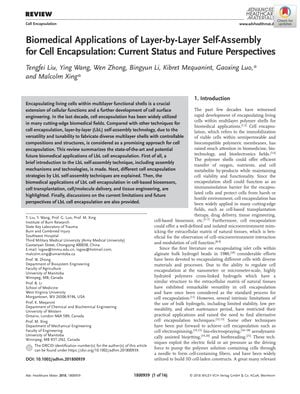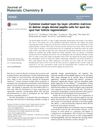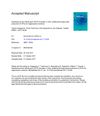Biomedical Applications of Layer-by-Layer Self-Assembly for Cell Encapsulation: Current Status and Future Perspectives
December 2018
in “
Advanced Healthcare Materials
”

TLDR Layer-by-Layer self-assembly is promising for biomedical uses like tissue engineering and cell therapy, but challenges remain in material safety and process optimization.
The document from 2018 reviews the advancements in Layer-by-Layer (LbL) self-assembly technology for cell encapsulation in biomedical applications, such as cell-based biosensors, cell transplantation, cell/molecule delivery, and tissue engineering. It discusses the methods of LbL self-assembly, including immersive and fluidic assembly, and the differentiation between direct and indirect cell encapsulation. The review highlights the potential of LbL techniques in controlling cell functions, enhancing cell viability, and creating nanostructured films and scaffolds with tailored properties. Specific applications mentioned include the fabrication of dermal papilla spheroids for hair follicle regeneration and the construction of 3D tumor spheroids, biomimetic tissues, and bone regeneration. Challenges such as cytotoxicity, material selection, and the need for optimizing process parameters are addressed. Future perspectives include integrating LbL with artificial intelligence and 3D bioprinting, as well as developing smart biomimetic materials and biocompatible micro-supercapacitors. The work was supported by the Southwest Hospital Key Program and other grants, with no conflict of interest declared.



